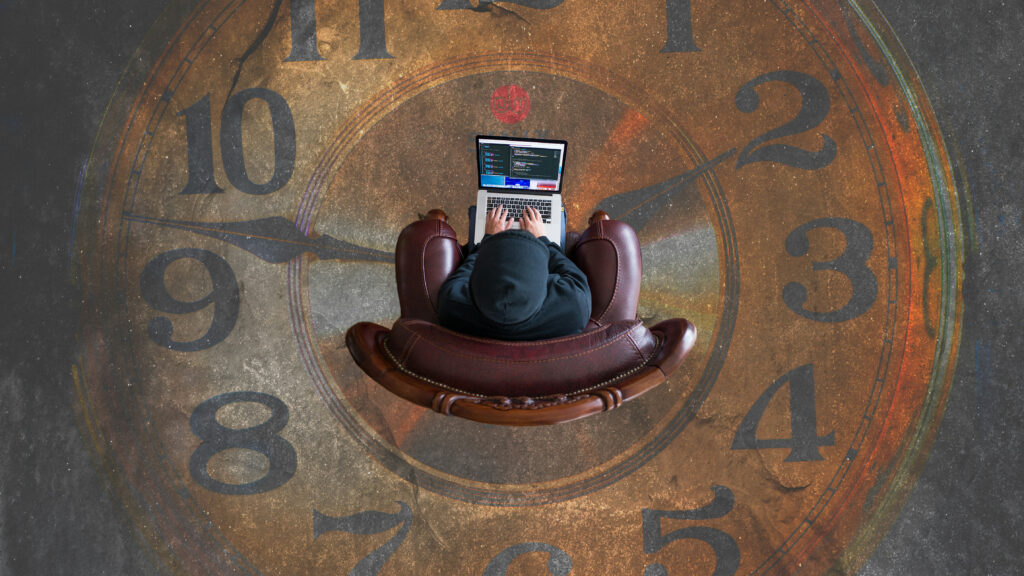In 1996, Nike custom-made a pair of special running shoes for Michael Johnson, with a US size 10.5 on the left foot and 11 on the right. To mark his place in the Atlanta Olympics, Nike plated Johnson’s shoes in gold.
Having won a combined total of six gold medals during 1991, ’92, ’93, and ’95 World Championships, Johnson went into the men’s 200m finals in 1996 wearing these shoes and was instantly dubbed ‘the man with the golden shoes.
Johnson was never usually shaken by pressure, with entire countries and a stadium full of people cheering him on.
But this time, the gold shoes were just enough to push him over the edge of performance anxiety. He felt as though the entire world had its eyes on him; the gold on the shoes meant nothing if he didn’t win a medal of the same shade.
If he didn’t, he wouldn’t matter. Johnson was deep in his own head struggling to find a way out of it, till he did. He left behind the external noises and broke them down to what he needed at that moment.
He gathered his thoughts and energy to be resilient in the face of the pressure and let go of the anxiety. At its most simplistic form, he needed to run—fast. Minutes from this moment, Johnson was on the podium receiving his second Olympic gold and his eighth overall, including the World Championships.
The world record and Olympic record he set in that race made him the fastest human in the world at the time.

Highlights
- Psychologists define resilience as a quality that allows people to remain calm and composed in the face of imminent stress,
- A number of research and experiments conducted on the subject of resilience and the neuroscience behind this quality have confirmed that there are certain neurotransmitters at play here during the process through which a person increases resilience and the ability to let go,
- You can build resilience by focusing on what’s in your control and managing stress through a variety of practices that regulate sleep, breathing, and other factors.
What is resilience?
Psychologists define resilience as a quality that allows people to remain calm and composed in the face of imminent stress.
They are able to optimally use their strengths and skills to keep up with the challenges of everyday life, such as going through medical issues, calamities, losing a loved one, coping with illness, or recovering from an athletic or sporting injury/burnout.
Being resilient allows us to overcome these difficulties and move on rather than steering towards unhealthy coping mechanisms such as escapism or falling into the deep, dark pit of hopelessness and despair.
This is not to say that those who are performing with resilience do not feel grief, distress, or anxiety; they are instead equipped with the right tools to handle these situations. Resilience is not just taking all the hits and repressing your pain—your mind will get bogged down and that’s not healthy.
Resilience involves letting go of these elements too in order to achieve peak performance. Letting go is a way of bringing change to your life. It can apply to a multitude of scenarios, like grieving a loss, a habit that was detrimental to your health (like smoking), the after-effects of an injury that held you back from performing at your best, etc.
Letting go is adapting to a new perception of thought, setting more realistic goals, and accepting the world around us for what it is and not what we want it to be or what it was in the past.
Science
A study conducted in 2009 examined two elements that fundamentally make up the quality of adaptation-based resilience: recovery and sustainability, followed by the ability to let go.
Recovery is considered the measurement of how quickly and effectively people can bounce back from adversity and return to a state of elite performance. Those who are resilient are able to recover their usual system of psychological and physiological equilibrium.
The other aspect that determines the resilience of the mind and body is the measure of how sustainable we have become. Sustainability here means the capacity of the physiology to endure and forge ahead in the face of adversity.
This improvement in physiology equips the body to prepare better in order to reach greater heights while performing.
Many researches and experiments conducted on resilience and the neuroscience behind this quality have confirmed that there are certain neurotransmitters at play here during the process through which a person increases resilience and the ability to let go.
A 2009 study explored the concept of how cognitive adaptive coping strategies had an influence on the individual’s genetic structure and their cortisol levels as part of their stress response systems, followed by a similar response from their neural circuitry function.
They have also carried out protocols to determine that adaptability as a factor of resilience relies on the specific gene expression and chromatin remodelling (epigenetic adaptations).
Hence, evidence of reducing cortisol levels and resilience as a result of genetic factors can be tapped into by utilizing its opportunity to increase levels of performance and endurance, since stress as a factor plays a smaller role, and coping mechanisms play a more successful one.
Another study examined the body’s response system and the release of the stress hormone cortisol to determine the impact of letting go on being able to mitigate mindfulness as a practice.
The results concluded that cortisol levels did indeed decrease during the early stages of recovery and confirmed the practice of letting go as an intervention method to activate mindfulness. Therefore, letting go is crucial for elite performers.
Actionables
Focus on what is in your control: It is always easier to pay more attention to everything that is out of our control, which can become extremely overwhelming. Instead, be aware of the things we have the ability to change ourselves.
Our mind and body are the only elements here that we can control, and fortunately for us, they play a direct hand in improving performance.
Managing stress: Getting stress levels in control is the most complex part of resilience building and letting go to boost performance to the highest level. It is an effective way to build habits that encourage physiological health and psychological stability.

Stress management by itself can have multiple layers to it when it comes to reducing cortisol levels in the body.
Controlling the controllable and stress management are two of the most pragmatic and efficient ways to increase performance output during stressful situations. Mentioned below are certain procedures and mechanisms to establish resilience and letting go as part of your goal objectives-
- Methods such as sleeping adequately, exercising, and following a healthy, balanced diet go a long way toward increasing immunity,
- Other more specific techniques like cognitive restructuring, which involves replacing detrimental habits with developmental ones, go a long way towards helping to let go of these damaging routines,
- Diaphragmatic breathing exercises allow smoother modulation of oxygen among our lungs, nervous system, and body physiology,
- Learning interactive biofeedback techniques to improve on particular modalities such as heart-rate variability, memory retention, and cognitive reflexes too,
- Progressive muscle relaxation is an efficient way of improving sleep quality, blood pressure, and physiological pain,
- It necessitates the relaxing of muscles by first tensing them, and the same can be done for the nervous system as well, permitting the letting go of pent-up tension and residual stress.
Conclusion
Learning to let go as a performance strategy will increase your ability to adapt to the challenges of life and performance. This style of confronting difficult situations will reduce the amount of mental energy being spent unwisely.
Therefore, it will make you gain the skill and knowledge of adaptability to ensure that you are also able to endure challenges for longer. Being able to endure consistently unexpected hurdles will dictate your output of performance, which will be at its highest.
Disclaimer: The contents of this article are for general information and educational purposes only. It neither provides any medical advice nor intends to substitute professional medical opinion on the treatment, diagnosis, prevention or alleviation of any disease, disorder or disability. Always consult with your doctor or qualified healthcare professional about your health condition and/or concerns and before undertaking a new health care regimen including making any dietary or lifestyle changes.








